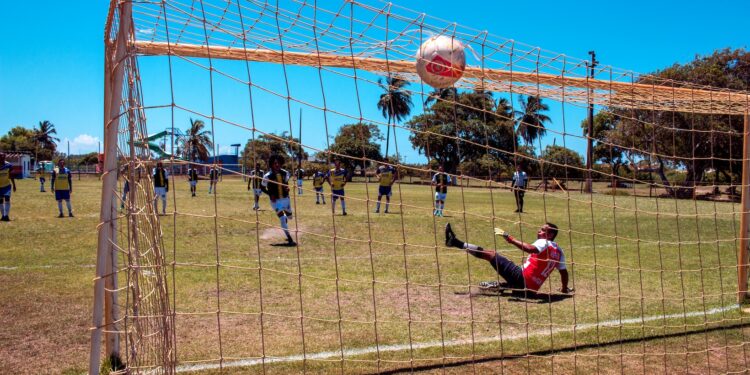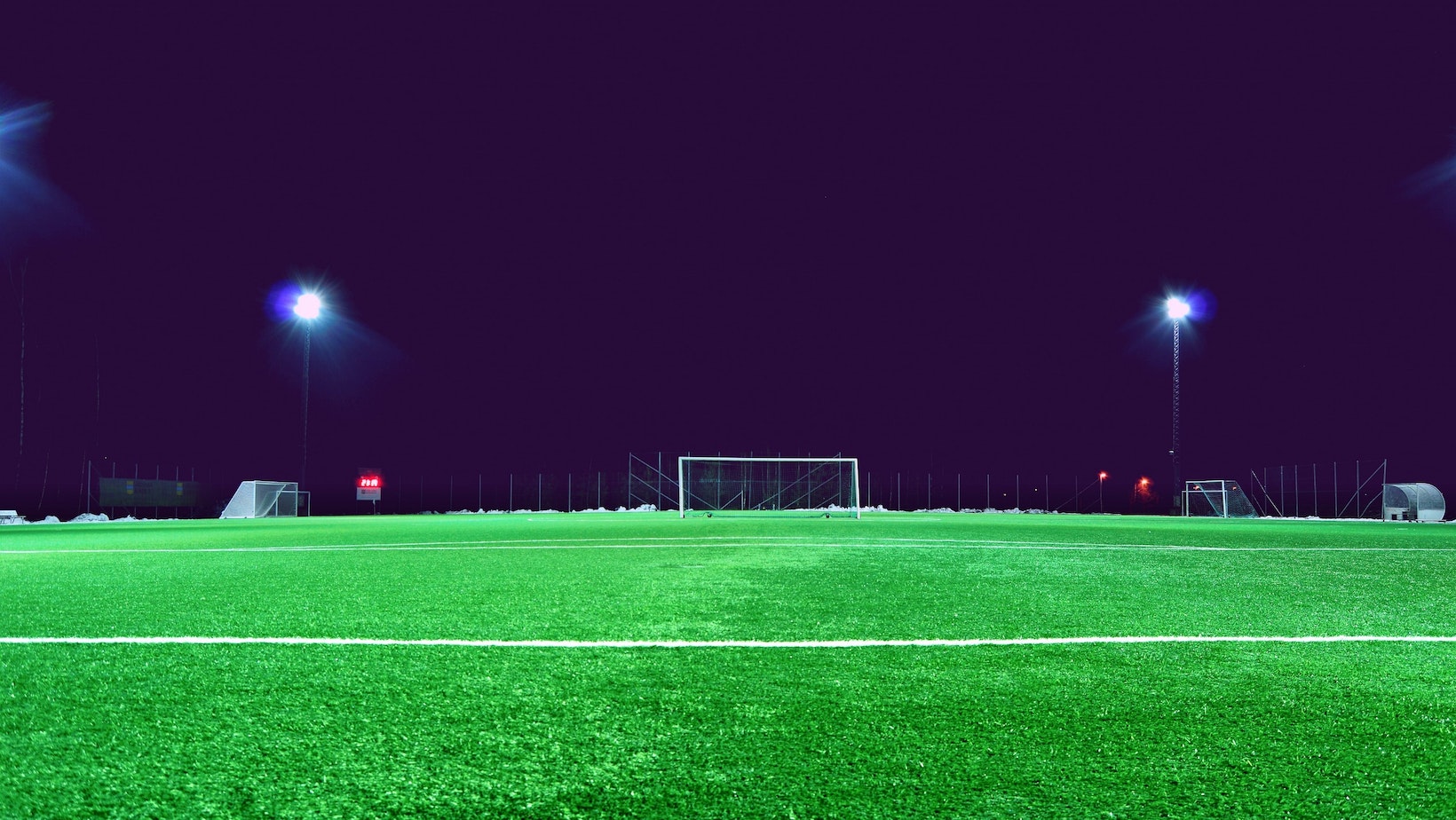The standard height of a football crossbar is 10 feet from the ground. This regulation has been set in place by the governing bodies of football to ensure a fair and safe game. The regulation has been in place for many years and is strictly enforced.
In this heading, we will look into the standard height of a football crossbar in more detail.
The Official Measurement for Crossbar Height
The official height for a football crossbar is 10 feet, per the National Football League (NFL) standards and the National Collegiate Athletic Association (NCAA). This height is measured from the ground to the bottom edge of the crossbar. It applies to all levels of American football, whether high school, college, or professional.
The crossbar must also be 18 feet 6 inches wide and positioned equidistant from each goalpost, set at 20 feet apart.
Maintaining the standard height and width of the football crossbar ensures that the game is played fairly and properly, across all levels.
History of The Football Crossbar Height
The history of the football crossbar height dates back to the 19th century. During the early days of football, there wasn’t any standard crossbar height, and it was set based on the height of the goalpost. Football associations recognized the need for a standardized crossbar height as the game’s popularity grew. In 1863, the Football Association (FA) established the first set of football rules, including crossbar height guidelines. The rules stated that the crossbar should be 8 feet above the ground. The crossbar height remained unchanged until 1875 when it was increased to 8 feet and 2 inches. In 1882, the height was raised again to 8 feet and 3 inches, where it stands today.
Pro tip: Knowing the history of the football crossbar height can help you understand how the game has evolved and what factors have influenced these changes.
The reason for the standardized height of the crossbar
The standardized height of the crossbar in football ensures a level playing field and consistency in the game.
The crossbar height is 10 feet above the ground, with the width of the goal posts set at 18 feet 6 inches. This standardized measurement applies to professional football and college and high school-level games.
Standardizing football equipment, including the goalposts and crossbar height, ensures a fair playing field for both teams. It also allows players to train and compete in a consistent environment.
While there may be variations in equipment and rules across different types of football, the standardized height of the crossbar ensures that every player has an equal chance to score and win.

Variations of Crossbar Height
The height of a football crossbar can vary, depending on a few factors. The standard rules dictate that the crossbar must be 8 feet above the playing surface to be legal. However, this rule can be adjusted to fit certain situations.
In this heading, we will explore the different rules and regulations surrounding the height of the crossbar.
Crossbar height variations in different football leagues
The crossbar height in football varies depending on the league and level of play. According to FIFA regulations, the crossbar must be 2.44 meters (8 feet) above the ground, but some leagues have slightly different rules.
Major League Soccer (MLS) – 8 feet to 8 feet, 6 inches
English Premier League – Exactly 8 feet
The reason for these variations in crossbar height is to accommodate different playing styles and to create a level playing field for all teams. However, regardless of the height of the crossbar, the objective remains the same – to score a goal by putting the ball into the back of the net, under the crossbar.
Crossbar height variations in different types of football matches
Crossbar height can vary depending on the type of football match being played. While the standard height for a crossbar in football is 8 feet (2.44 meters), some variations exist.
International Matches – 8 feet (2.44 meters)
Premier League – 8 feet (2.44 meters)
Women’s Football – 7 feet 10 inches (2.35 meters)
Youth Football – 7 feet (2.13 meters)
Futsal – 6 feet 6 inches (2 meters)
It’s important to note that these are just general guidelines and crossbar height may vary depending on the league or tournament rules.
Customized Crossbar Heights in Non-Regulation Football Games
In non-regulation football games, the crossbar height can be customized to fit the players’ abilities and preferences. While the standard crossbar height in regulation football is 10 feet, non-regulation games offer the flexibility to adjust the height based on the skill level of the players and the type of game being played.
Here are some common variations of crossbar height in non-regulation football:
Lowered Crossbar – 8 or 9 feet
Raised Crossbar – 11 or 12 feet
Off-Center Crossbar – Left or right
Pro Tip: Communicate the chosen crossbar height to all players before the game to avoid confusion or disputes.
في العارضة كورة فور لايف
Football is one of the most popular sports in the world, and the crossbar is an integral part of the game. The height of the crossbar can determine a team’s strategy, as well as the physical play of the game.
In this article, we will take a closer look at the impact of the crossbar height on the game, and how it can affect the outcome of a match.
Importance of crossbar height in penalty kicks
The crossbar height can play a crucial role in the outcome of penalty kicks in football games. According to the official rules, the crossbar should be placed 2.44 meters (8 feet) from the ground. However, some variations in height can significantly impact the game.
If the crossbar is too low, players are likelier to score goals by aiming low shots that bounce off the ground and into the net. This can make the game less exciting and decrease the goalkeeper’s importance.
On the other hand, if the crossbar is too high, players may have a harder time aiming accurately and scoring goals. This can lead to fewer goals, making the game less exciting for spectators.
Therefore, it’s important to ensure that the crossbar height is set correctly to balance exciting gameplay and a fair competition.
Strategic implications of crossbar height modifications
The strategic implications of crossbar height modifications in football can significantly impact the gameplay and scoring potential of the teams.
The standard height of a football crossbar is 10 feet (3.05 meters) above the ground. However, there are some variations in the height depending on the level of play and the type of tournament.
Modifying the crossbar height can result in the following strategic implications:
Lowering the crossbar height can increase scoring chances and encourage teams to play offensively. However, it can also make the goalkeeper’s job much harder as they must be more alert and agile.
Raising the crossbar height can make it more challenging for players to score and encourage a more defensive style of play. It can also increase the goalkeeper’s chances of making saves and reducing the number of goals.
However, any modification of the crossbar height needs to be balanced and regulated to maintain the fairness and integrity of the game.
Pro-tip: Some footballers have practiced by jumping over high goals in training, which helped not only increased the height they could leap to clear defenders and helped them with other aspects of their game such as speed and agility.

Influence of crossbar height on football technology advancements
The height of the crossbar in football significantly influences the game and technological advancements in the sport. The standard height of the crossbar is 2.44 meters, but there have been debates about whether to raise or lower it. A higher crossbar would allow for more space between the players and the ground, thus reducing the number of low-flying shots and encouraging players to aim higher. Conversely, a lower crossbar would force players to aim lower, creating more opportunities for ground-level shots and increasing the chances of close-range goals.
Technological advancements such as goal-line technology have also emerged due to debates about the height of the crossbar. The system uses cameras to accurately determine whether the ball has crossed the goal line, particularly in cases where the ball bounces off the crossbar.
Ultimately, the crossbar height is a crucial factor in the game of football and will continue to influence technological advancements.

















